Cella di Santa Rosa
Cell of Santa Rosa
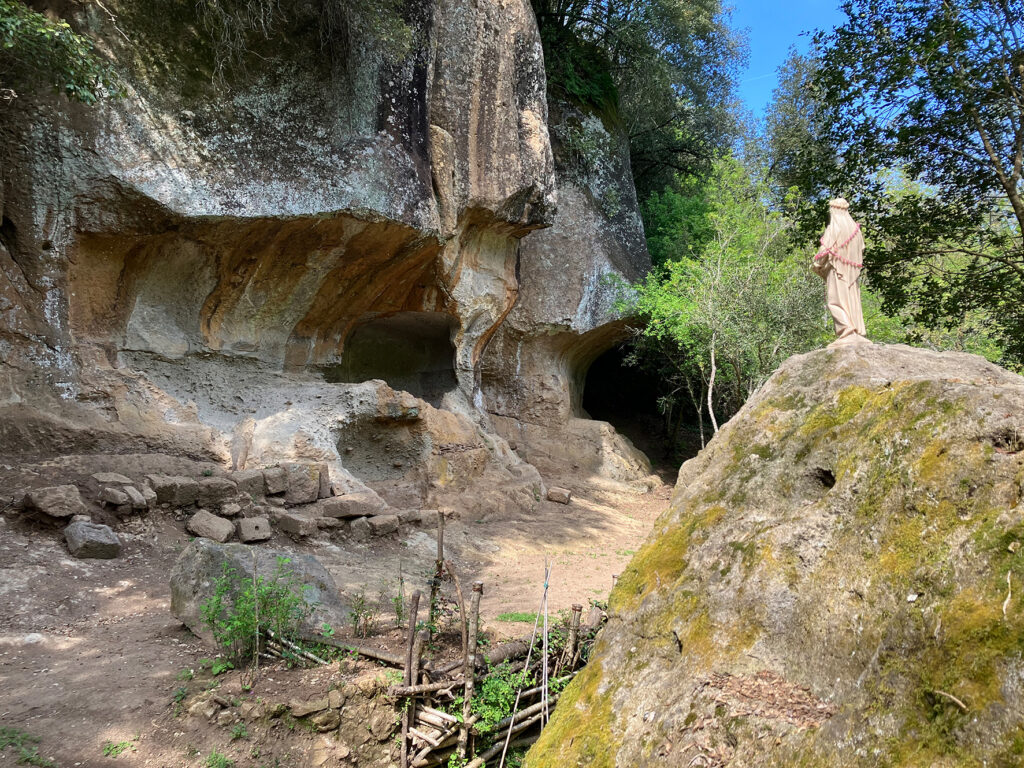
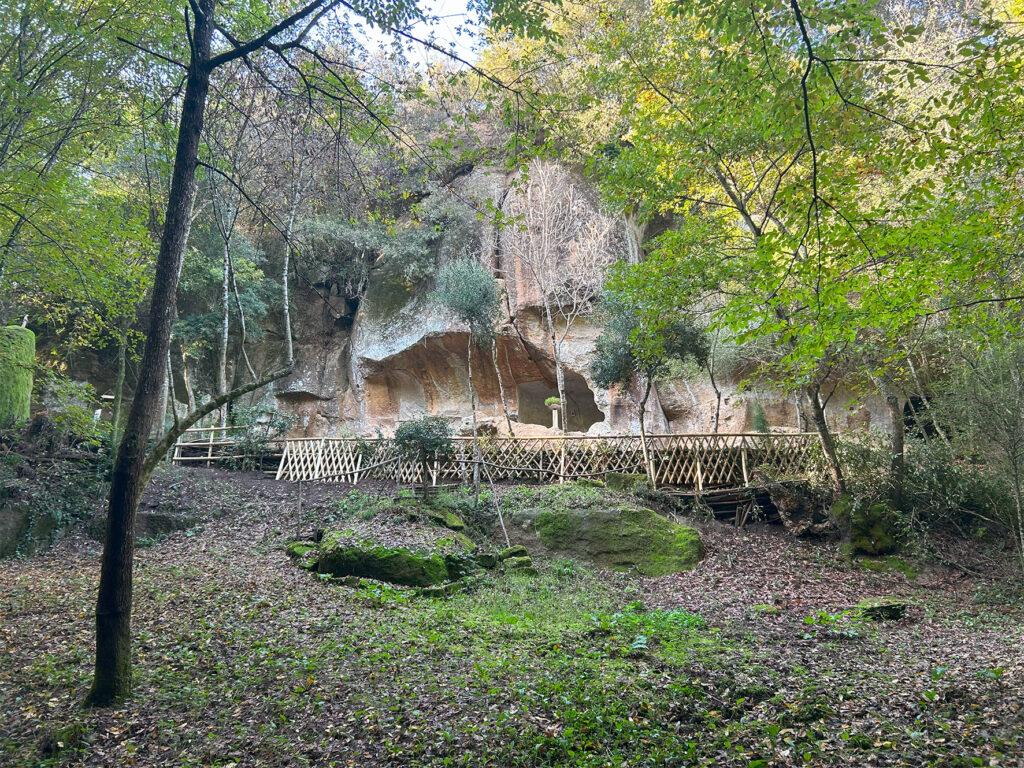

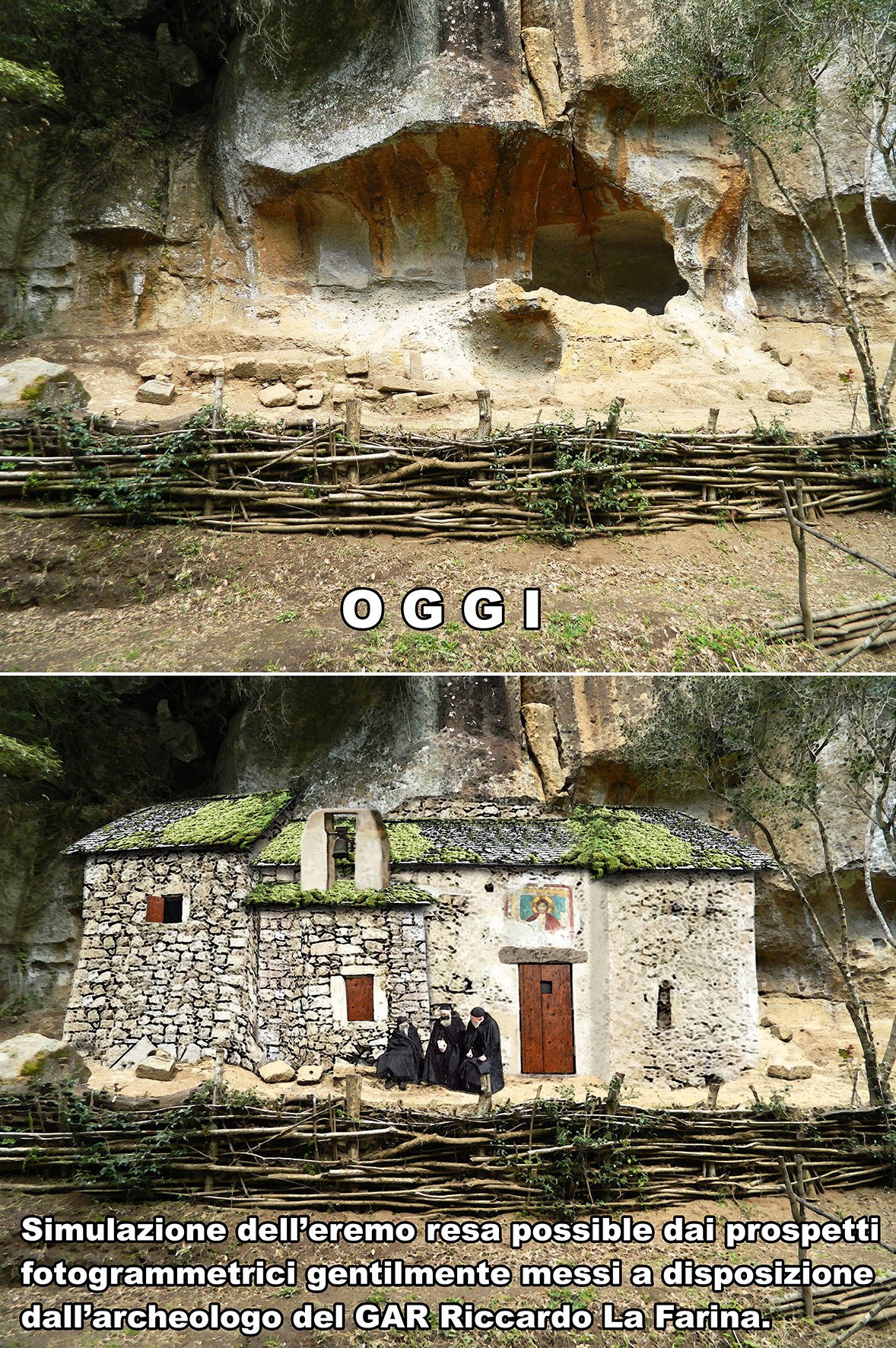


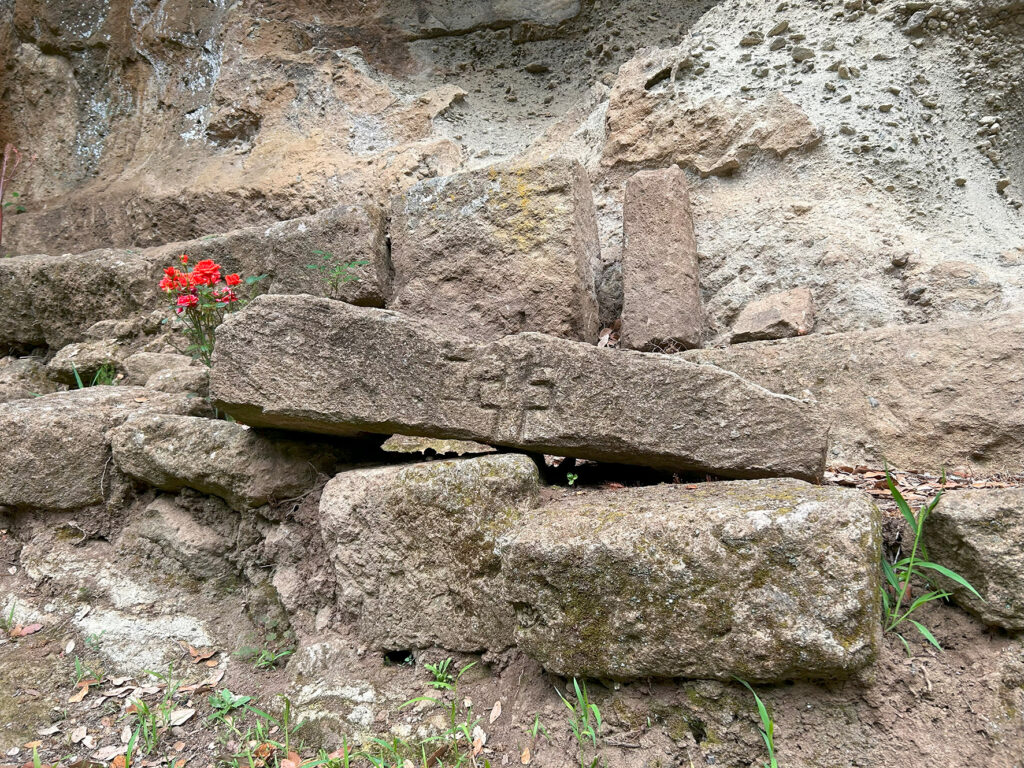
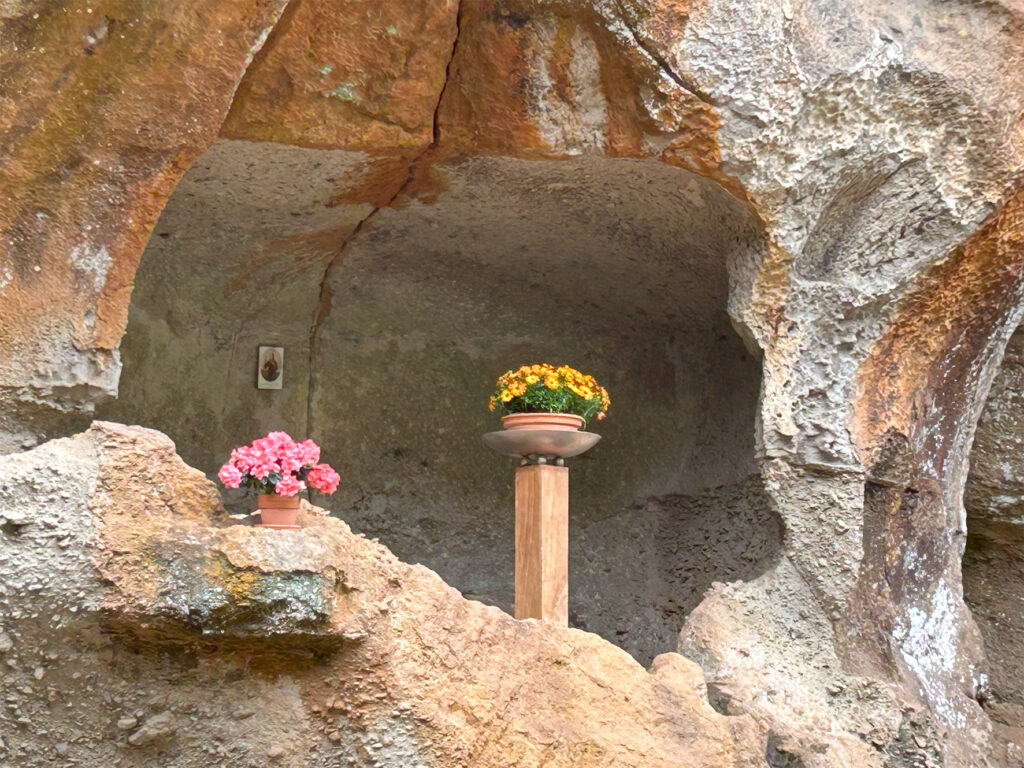
Clip versione Italiano
English video clip
Con riferimento alla patrona viterbese, questa struttura totalmente diruta, originariamente un eremo bizantino, è da sempre nota con il toponimo “Cella di Santa Rosa”. Non solo, l’idronimo del corso d’acqua che gli scorre di fronte è “Fosso di Santa Rosa” e gli esigui resti di affresco all’interno dell’ipogeo sono disseminati di scritte e graffiti inneggianti ancora a “Lei”.
Eppure, questo apologetico luogo non si trova dove ci si potrebbe aspettare, vale a dire Viterbo o immediate vicinanze, bensì in una profonda forra in quel di Vasanello, paese dall’altra parte del Cimino, distante una trentina di chilometri e del tutto alieno al culto di questa straordinaria figura. In buona sostanza il toponimo, l’idronimo e i graffiti sono da considerarsi frutto di una contaminazione culturale, o rappresentano piuttosto una reale reminiscenza del transito in questo luogo di Rosa da Viterbo?
Nel 2023 il Gruppo Albatros ha pubblicato il saggio “Nel Nome di Rosa”, del giornalista-saggista Ardelio Loppi, nel quale, attraverso elementi molto verosimili, è prospettata la concreta possibilità che Rosa e famiglia transitarono presso l’eremo in occasione dell’esilio cui la giovane fu condannata, dalle autorità ghibelline di Viterbo, nel dicembre del 1250.
Il crollo della struttura, così come lo sconvolgimento dell’intera forra dove si trovano le vestigia, disseminata di enormi massi spaccati come dalla mano di un gigante infuriato, si deve con ogni probabilità al più violento terremoto che abbia colpito questa zona. Accadde il 9 settembre 1349 e devastò, con magnitudo 6.8, i confini nord-occidentali dello Stato Pontificio e del Regno di Napoli: gli odierni Abruzzo, Lazio e Molise.
Non è quindi improprio associare il crollo dell’eremo a quel devastante sisma e, di conseguenza, ritenere che non venne ricostruito a causa delle minacciose spaccature createsi su tutto il fronte roccioso sovrastante. Sempre che i monaci che lo occupavano non siano da annoverare tra le 2.500 vittime stimate.
With reference to the patron saint of Viterbo, this completely ruined structure, originally a Byzantine hermitage, has always been known by the name “Cella di Santa Rosa.” Moreover, the name of the stream that flows in front of it is “Fosso di Santa Rosa,” and the scant remains of frescoes inside the hypogeum are scattered with writings and graffiti still celebrating “Her.”
Yet, this evocative place is not located where one might expect, namely Viterbo or its immediate surroundings, but rather in a deep gorge in Vasanello, a town on the other side of the Cimino mountains, about thirty kilometers away, completely foreign to the cult of this extraordinary figure. Essentially, should the place name, the hydronym, and the graffiti be considered a result of cultural contamination, or do they represent a genuine reminiscence of Rosa da Viterbo’s passage through this location?
In 2023, the Albatros Group published the essay “Nel Nome di Rosa,” by journalist and essayist Ardelio Loppi, which, through very plausible elements, presents the concrete possibility that Rosa and her family passed through the hermitage during the exile she was sentenced to by the Ghibelline authorities of Viterbo in December 1250.
The collapse of the structure, as well as the upheaval of the entire gorge where the ruins are located, scattered with enormous boulders shattered as if by the hand of an enraged giant, is most likely due to the most violent earthquake to hit this area. It occurred on September 9, 1349, devastating the northwestern borders of the Papal State and the Kingdom of Naples, with a magnitude of 6.8: present-day Abruzzo, Lazio, and Molise.
It is therefore not inappropriate to associate the collapse of the hermitage with that devastating earthquake and, consequently, to believe that it was not rebuilt due to the threatening fissures that formed across the entire rocky front above it. This is unless the monks who occupied it are among the estimated 2,500 victims.


